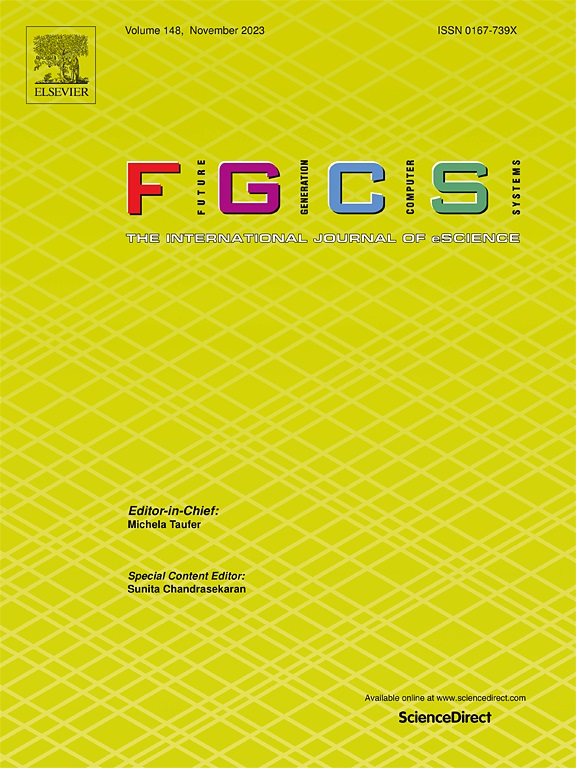在边缘云连续体上学习的物联网方法
IF 6.2
2区 计算机科学
Q1 COMPUTER SCIENCE, THEORY & METHODS
Future Generation Computer Systems-The International Journal of Escience
Pub Date : 2025-02-08
DOI:10.1016/j.future.2025.107736
引用次数: 0
摘要
物联网(IoT)设备提供恒定的上下文数据,可用于自动重新配置和优化智能环境。人工智能(AI)和深度学习技术是越来越重要的工具,因为深度强化学习(DRL)可以为这个问题提供一个通用的解决方案。然而,DRL模型可能部署的场景的异质性是巨大的,这使得通用即插即用模型的设计非常困难。此外,DRL模型在Edge上的实际部署,特别是在物联网中,受到两个因素的限制:首先,训练过程的计算复杂性,其次,需要一个相对较长的探索阶段,在此期间,智能体通过试错进行。这两个问题的自然解决方案是通过创建环境的数字孪生(Digital Twin, DT)来使用模拟环境,该环境可以复制数字域中的物理实体,为应用层提供标准化接口。DTs允许在模拟环境中对模型和服务进行模拟和测试,这些模拟环境可以托管在更强大的云服务器上,而无需交换真实设备生成的所有数据。在本文中,我们提出了一种基于新兴物联网(WoT)标准的新架构,该架构提供了智能环境的DT,并在实时数据上应用了DRL技术。我们讨论了使用dt进行DRL训练的理论特性,在现有的实际部署中展示了我们的系统,并将其性能与遗留系统进行了比较。我们的研究结果表明,DT的实施,特别是对于DRL模型,允许更快的收敛和更精细的调整,以及减少边缘网络上的计算和通信需求。使用具有不同复杂性和数据需求的多个dt也可以帮助加速培训,逐步进行。本文章由计算机程序翻译,如有差异,请以英文原文为准。
A Web of Things approach for learning on the Edge–Cloud Continuum
Internet of Things (IoT) devices provide constant, contextual data that can be leveraged to automatically reconfigure and optimize smart environments. Artificial Intelligence (AI) and deep learning techniques are tools of increasing importance for this, as Deep Reinforcement Learning (DRL) can provide a general solution to this problem. However, the heterogeneity of scenarios in which DRL models may be deployed is vast, making the design of universal plug-and-play models extremely difficult. Moreover, the real deployment of DRL models on the Edge, and in the IoT in particular, is limited by two factors: firstly, the computational complexity of the training procedure, and secondly, the need for a relatively long exploration phase, during which the agent proceeds by trial and error. A natural solution to both these issues is to use simulated environments by creating a Digital Twin (DT) of the environment, which can replicate physical entities in the digital domain, providing a standardized interface to the application layer. DTs allow for simulation and testing of models and services in a simulated environment, which may be hosted on more powerful Cloud servers without the need to exchange all the data generated by the real devices. In this paper, we present a novel architecture based on the emerging Web of Things (WoT) standard, which provides a DT of a smart environment and applies DRL techniques on real time data. We discuss the theoretical properties of DRL training using DTs, showcasing our system in an existing real deployment, comparing its performance with a legacy system. Our findings show that the implementation of a DT, specifically for DRL models, allows for faster convergence and finer tuning, as well as reducing the computational and communication demands on the Edge network. The use of multiple DTs with different complexities and data requirements can also help accelerate the training, progressing by steps.
求助全文
通过发布文献求助,成功后即可免费获取论文全文。
去求助
来源期刊
CiteScore
19.90
自引率
2.70%
发文量
376
审稿时长
10.6 months
期刊介绍:
Computing infrastructures and systems are constantly evolving, resulting in increasingly complex and collaborative scientific applications. To cope with these advancements, there is a growing need for collaborative tools that can effectively map, control, and execute these applications.
Furthermore, with the explosion of Big Data, there is a requirement for innovative methods and infrastructures to collect, analyze, and derive meaningful insights from the vast amount of data generated. This necessitates the integration of computational and storage capabilities, databases, sensors, and human collaboration.
Future Generation Computer Systems aims to pioneer advancements in distributed systems, collaborative environments, high-performance computing, and Big Data analytics. It strives to stay at the forefront of developments in grids, clouds, and the Internet of Things (IoT) to effectively address the challenges posed by these wide-area, fully distributed sensing and computing systems.

 求助内容:
求助内容: 应助结果提醒方式:
应助结果提醒方式:


